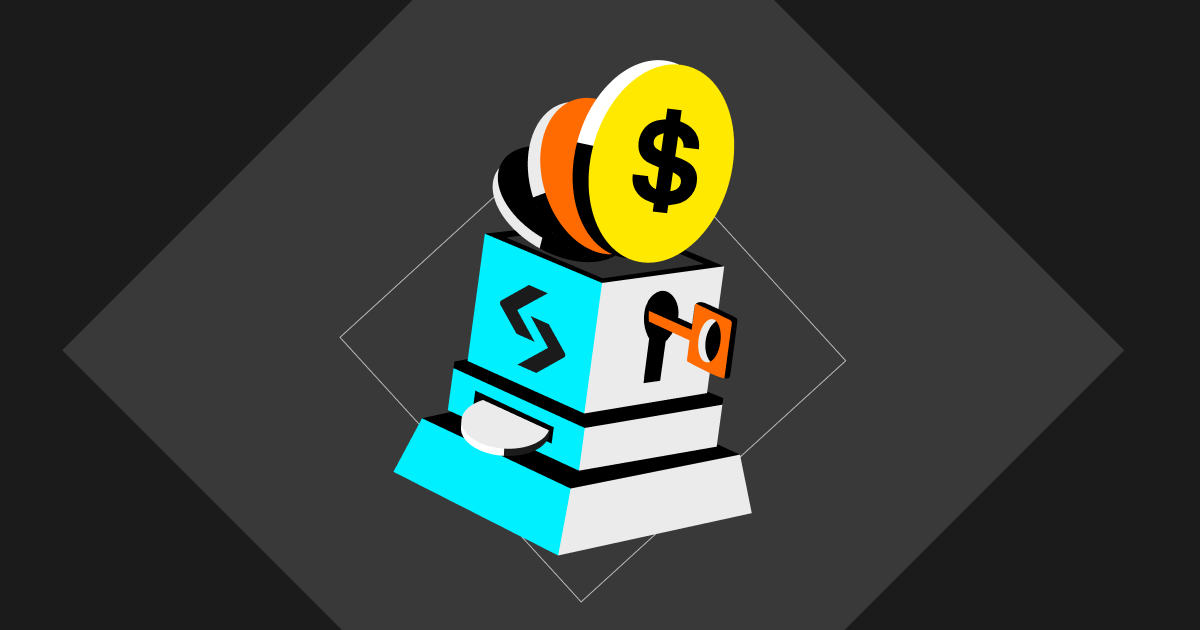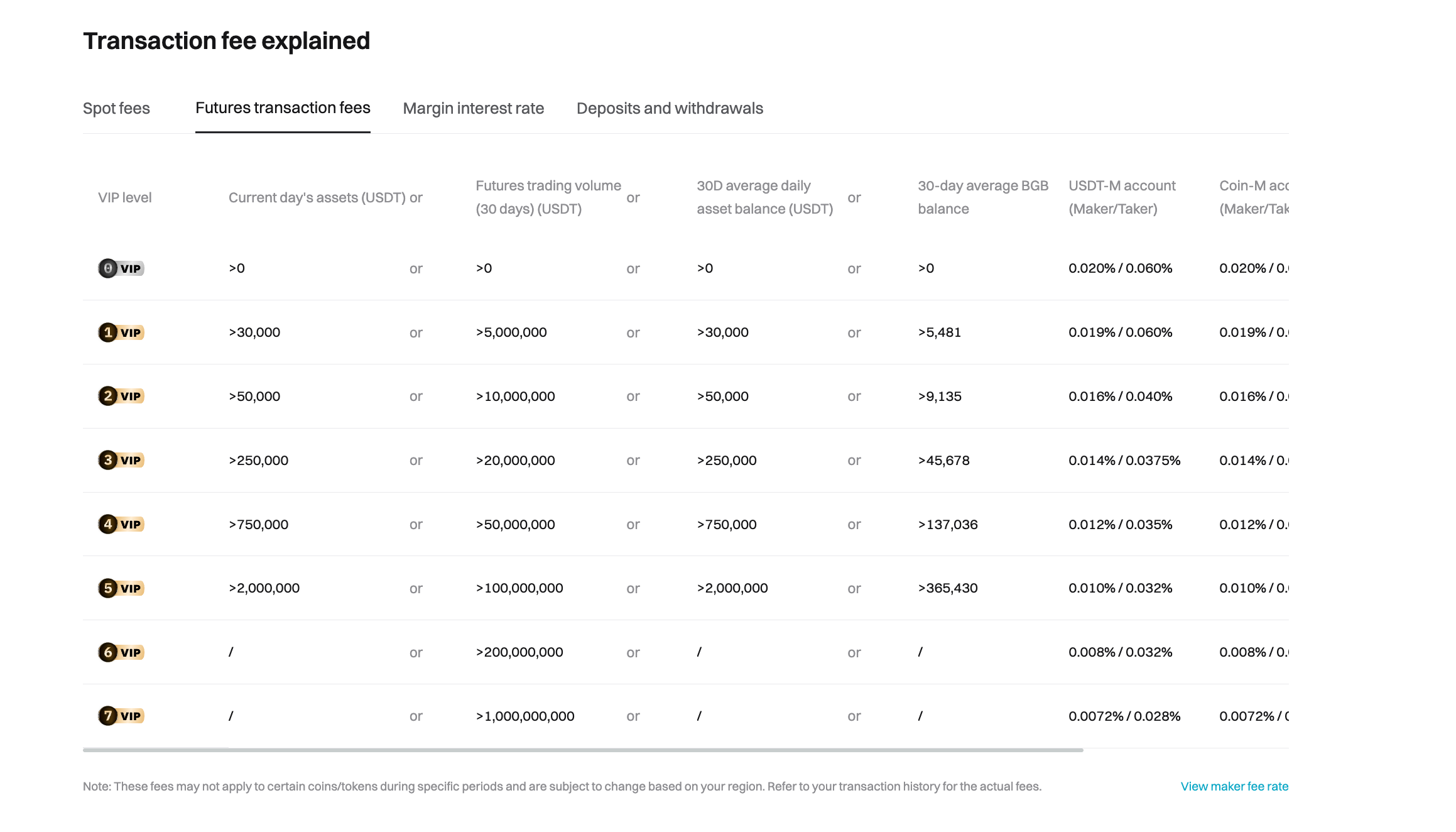Bitget beginner's guide: Understanding futures fees

When trading futures on Bitget, it's essential to understand the fee structure. Bitget's futures fees consist of three main components: transaction fees, funding fees, and liquidation fees. This guide breaks down how each type of fee is calculated, the factors that influence them, and provides examples to help beginners get started quickly. Fee structures vary slightly between perpetual and delivery futures, and we will cover both.
Transaction fees
Bitget charges two types of transaction fees on futures trades: maker and taker fees. The exact rate depends on the futures type—perpetual or delivery. A maker adds liquidity by placing orders, and usually pays a lower fee. On the other hand, a taker removes liquidity by filling orders, and typically pays a higher fee. Here are the standard fee rates for both futures types (with USDT-margined perpetual futures as an example). Actual rates are subject to the official announcements.
• Perpetual futures: Maker fee: 0.02%; Taker fee: 0.06%.
• Delivery futures: Maker fee: 0.015%; Taker fee: 0.05%.
Transaction fee = order value × transaction fee rate, where order value = (quantity × price)
Example:
Trader A places a market order to buy 1 BTCUSDT futures. Trader B places a limit order to sell 1 BTCUSDT futures. If the trade is executed at 60,000 USDT, then:
Taker fee for Trader A = 1 × 60,000 × 0.06% = 36 USDT
Maker fee for Trader B = 1 × 60,000 × 0.02% = 12 USDT
Funding fees
Funding fees apply only to perpetual futures. They are used to balance the price between long and short positions and keep perpetual futures prices aligned with spot prices. Bitget settles funding fees every eight hours (at 12:00 AM, 8:00 AM, and 4:00 PM, UTC+8). The funding rate is determined by the relative buying and selling pressure in the market. When the funding rate is positive, longs pay shorts. When the funding rate is negative, shorts pay longs.
Funding fee details:
|
|
Fee rate > 0 |
Fee rate < 0 |
|
Long position holders |
Pay funding fees |
Receive funding fee |
|
Short position holders |
Receive funding fee |
Pay funding fees |
Funding fee formula:
Funding fee = position value × funding fee rate
Example:
Assume you hold a long BTCUSDT perpetual futures position worth 20,000 USDT. If the current funding rate is 0.01%, you will pay 20,000 × 0.01% = 2 USDT. If the rate is −0.01%, you will receive 2 USDT instead. Delivery futures does not incur funding fees, as they settle at expiration and do not require price alignment with the spot market.
Liquidation fees
When your margin ratio falls below the maintenance margin requirement, Bitget's liquidation mechanism will be triggered to protect both users and the platform. An additional liquidation fee is charged, based on your futures type and position size. The fee is typically calculated as a fixed percentage and deducted from the remaining margin.
Liquidation fee formula:
Liquidation fee = position value × liquidation fee rate
Example:
Assume you hold a perpetual futures position worth 50,000 USDT, and the liquidation fee rate is 0.5%. If liquidation occurs, the liquidation fee would be 50,000 × 0.5% = 250 USDT. Liquidation fee rates for delivery futures may vary. Refer to the official Bitget documentation for details.
Impact of VIP levels
You can reduce your transaction fees and unlock perks based on your VIP level. VIP levels are determined by your spot and futures trading volume, asset balance, and BGB holdings. If you meet the VIP2 threshold based on your spot trading volume, but only VIP1 for futures trading volume, you will still enjoy VIP2-level fee discounts.

Conclusion
Transaction fees, funding fees, and liquidation fees together form the total cost of trading futures on Bitget. By understanding these components and monitoring your leverage, liquidity, and VIP status, you can optimize your trading strategy and reduce costs. For more information, refer to the official Bitget fee schedule.
Share

